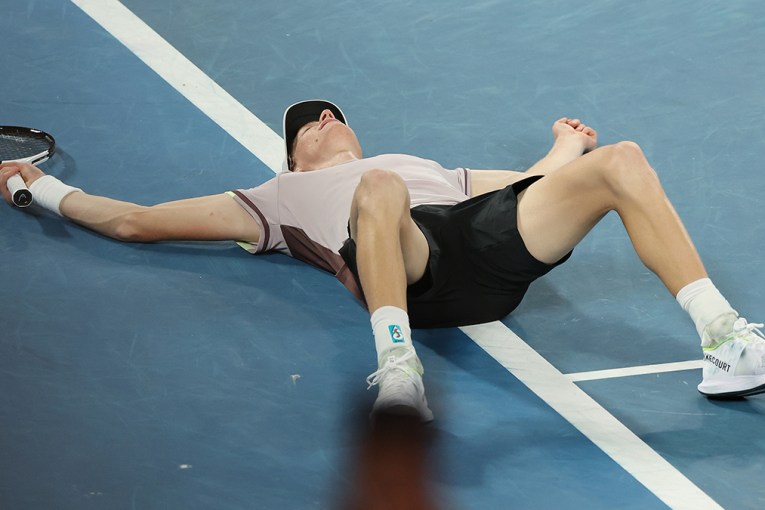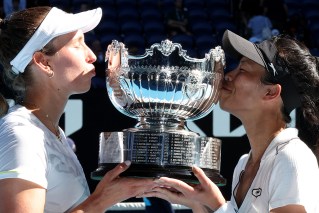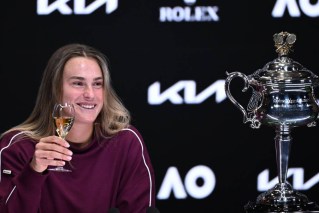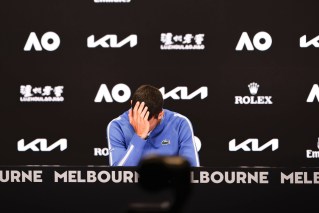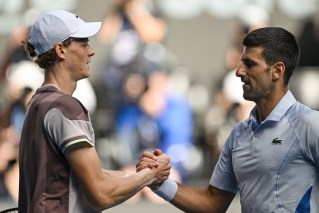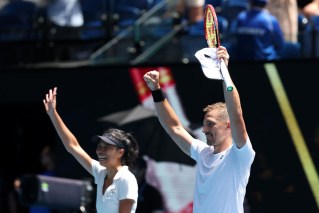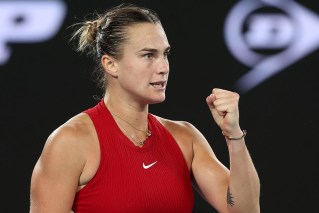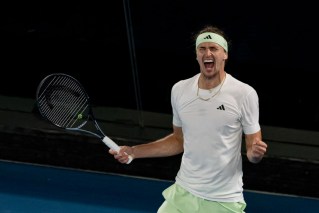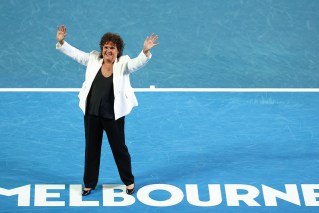Why Naomi Osaka v Jennifer Brady will be an Australian Open final to remember

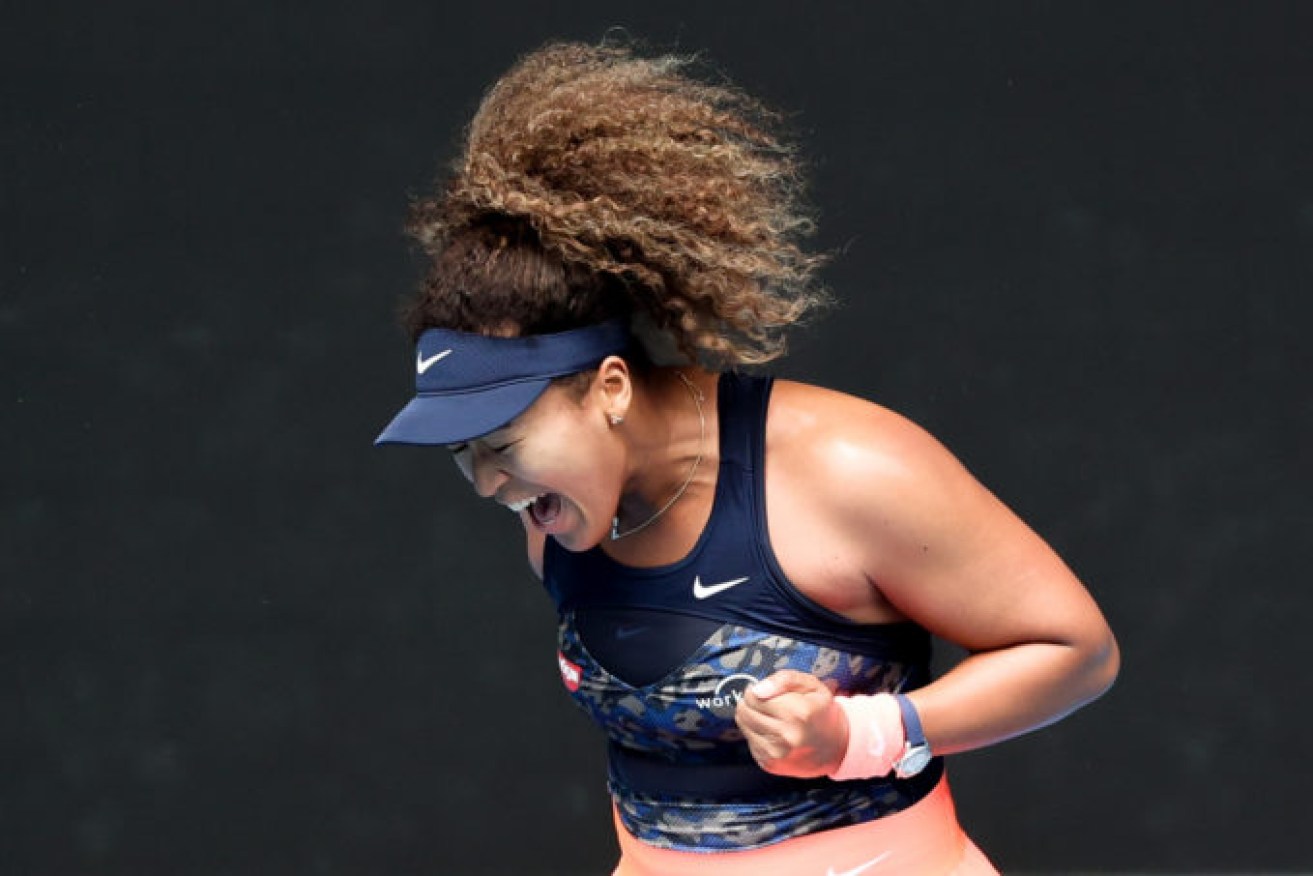
Naomi Osaka is the highest-paid sportswoman on the planet Photo: Getty
If this was indeed Serena Williams’ Australian Open farewell, there is a certain symbolism in the fact that the last Melbourne Park final she failed to reach will instead feature the woman considered her most natural successor – and an American emerging from the giant shadow cast by arguably the greatest ever.
Let’s start with Naomi Osaka. You’ll know her.
World No.3. The highest-paid sportswoman on the planet. The American-based daughter of a Japanese mother and Haitian father. Unbeaten in her past 20 matches and three previous major finals – all on hardcourts, including the infamous 2018 US Open decider overshadowed by Williams’ code violation meltdown.
An introverted, softly-spoken soul who nevertheless makes major political statements, including supporting the Black Lives Matter movement by wearing personalised face masks at last year’s US Open to recognise victims of racism and police brutality. More recently, she condemned as “ignorant” the sexist remarks of the chief organiser of the Tokyo Olympics, who has since been replaced by a woman. Naomi approved.
And then there’s her supercharged game, based around a monster serve that leads most of the tournament’s statistical categories, crushing groundstroke power and improved returns. Since her most recent defeat, last February, Osaka says she benefitted from vocalising her worries and expressing her feelings with coach Wim Fissette rather than suffering alone.
Her opponent: Jennifer Brady. You might know her, but not nearly so well.
The 25-year-old reached the 2017 Australian Open fourth round as a qualifier, but was perhaps better known in these parts as the world No.53 who upset Ash Barty at the 2020 Brisbane International in the Queenslander’s first home tournament after winning the French Open and being crowned world No.1.
Yet although her name might sound like something from a ‘70s American sitcom, it was clear by the end of the pandemic-affected season that there was also a whole lot to like about the big-serving, hard-hitting Brady game. Barty is her current doubles partner, and the member of the duo the scriptwriters had pencilled in for a Saturday night out from the top half of the draw.

United States’ Jennifer Brady reflects during her semi-final against Karolina Muchova on Thursday.
Still, the seventh woman to reach a debut major final from the past nine played can take some heart from the fact that only one of the previous six did not take home the trophy. The current No.24 will move to a career-high ranking in the top 13, regardless.
Brady was no junior prodigy, though, and chose the US college route via UCLA. It was only last year that she breached the top 50, having realised after practising with several top players that they weren’t doing anything she couldn’t. Throughout her years at the Evert Tennis Academy in Florida, young Jenny was often told by her coaches that she had the potential to be a great player; it just took her time to find her game, and tame her temper.
“Wasn’t really mentally the toughest,’’ she admits. “So I think that has kind of just shifted my whole career, just being able to stay in tough moments, close out tough matches, just fight my way back regardless of the score. I was told my whole junior career that I have a good forehand, good serve. I just needed to put the two things together and, you know, now I have.’’
First did in 2020, really, after moving out of her comfort zone to train in Germany under coach Michael Geserer. She won her first career singles title when the tour resumed, and then reached the last four at the US Open, where she lost the most recent of her trio of career meetings with Osaka in three sets.
Perhaps most admirable of all, though, is the fact that she spent 15 days in hard quarantine after a positive COVID test on her charter flight. Brady refused to complain, and remained resolutely positive, despite wondering how she would manage.
“We were saying ‘OK, we can’t change the situation. There are much more worse situations in the world. It’s something we have to adapt (to), it’s something we have to, think positive’,’’ Geserer said yesterday. “I mean, we didn’t have a master plan because it never happened to us before.’’
Brady slept a lot, which helped her recovery from a demanding year, worked out twice daily, hit against the bed propped against a wall. The creature of habit eschewed the hotel meals, cooking porridge for breakfast and ordering Hunky Dory via Uber Eats each day – for the whole first week. She avoided watching Netflix, fearful that she would end up doing nothing else.
Osaka had greater freedoms as part of the Adelaide A-listers, including Williams, whose dream of a record-equalling 24th major she ruthlessly crushed, despite a modest serving performance, before bowing politely to her long-time idol at the net.
Fissette says the best thing about Osaka is that she is a great thinker as well as a big hitter, somehow combining more consistency from the baseline with even greater aggression. A common quality among the players he has coached, who include Kim Clijsters and Angelique Kerber, is a love of the big occasion, with Fissette likening his charge’s excitement before playing Williams to his young children about to go to a toy shop.
“It’s just beautiful to see,’’ said Fissette. “You know, like, at the end, this is what you train for, right, to be on the biggest stage with the best player of all time: Serena. This is the moment where you want to play your best tennis.’’
The finalists’ joint history dates back to USTA-sanctioned tournaments in Florida, and Brady recalls after first playing Osaka, 18 months her junior, that “I was, like ‘wow, she hits the ball huge. She’s gonna be good’. I mean, I was, like ‘OK’, she’s got something special’.’’
And now? “She just puts a lot of pressure on you to serve well, because she’s holding serve in, like, 45 seconds. She’s serving well. She’s coming at you with a lot of power, so it also puts a lot of pressure on you to be aggressive and try to get the first strike. Otherwise you’re the one running, and I don’t want to be running.’’
When Brady walks out onto Rod Laver Arena on Saturday night against the 2019 champion, she accepts she will be nervous, but is also determined to embrace the moment and back her own ability, as she has done so far.
Osaka, who saved two match points against Garbine Muguruza in her fourth round, has the attitude of a champion, and, at 23 and one win away from winning her major No.4, the Japanese superstar is building an imposing big-match record.

Naomi Osaka will contend her second Australian Open final on Saturday.
“For me, I have this mentality that people don’t remember the runners up,’’ Osaka said. “You might, but the winner’s name is the one that’s engraved. I think I fight the hardest in the finals. I think that’s where you sort of set yourself apart.’’
Yet now that she has achieved her goal of making history as the first Japanese slam-winner, she believes there is more to do. “So for the me right now, of course it’s nice to see your name on a trophy or your name on a wall. But I think bigger than that, I feel like I’m playing with a different purpose for this trip.
“I think I’m just so happy with my team and we’ve been through this entire quarantine and we’ve been stuck together. I don’t know, every day is really fun with them. I just want to do really well as a vessel for everyone’s hard work.’’
